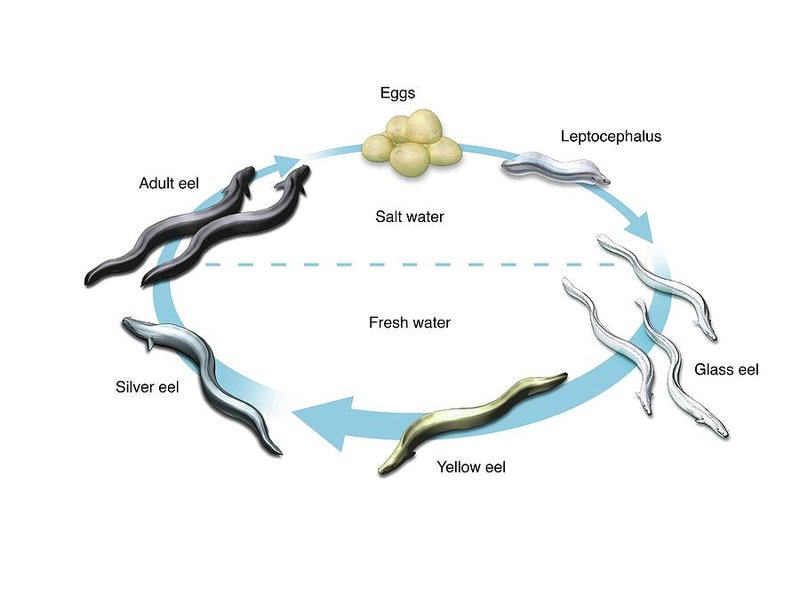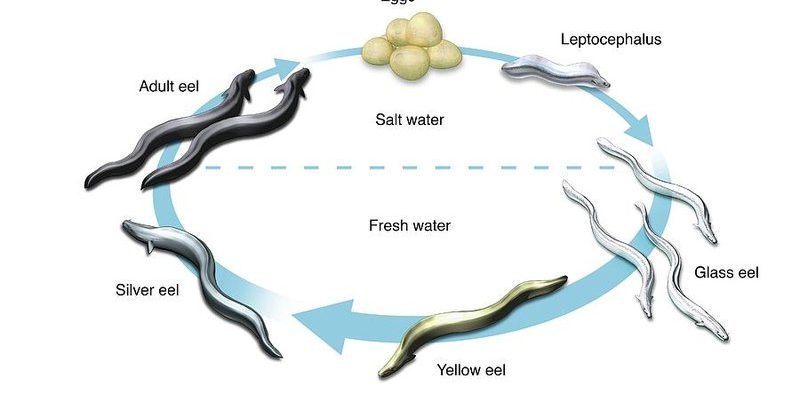
Eels, especially the European and American species, have a unique life cycle that takes them thousands of miles across ocean waters. They start their journey in the Sargasso Sea, a shallow area of the North Atlantic known for its clear blue waters. From there, they navigate rivers and streams, showing remarkable tenacity. It’s a journey filled with hurdles, and yet, it’s all for the act of reproduction, ensuring the next generation can thrive. So, let’s delve into the captivating world of eel breeding and reproduction and uncover the secrets behind these slippery swimmers.
Understanding the Life Cycle of Eels
To grasp how eels reproduce, it’s essential to understand their life cycle. Eels have a fascinating journey that involves multiple stages, each with its unique characteristics. They start as eggs laid in the Sargasso Sea, hatch into larvae known as leptocephali, and then slowly migrate towards coastal waters and rivers. Imagine these tiny larvae as little explorers, floating and drifting until they reach the rivers where they’ll grow into adult eels.
The transformation from larvae to adult eel is pretty remarkable. They undergo a process called metamorphosis—where their shape and features dramatically change. Over time, they develop the elongated, snake-like bodies we associate with eels today. This journey can take several years, sometimes even decades, depending on environmental conditions. Isn’t it incredible how these creatures invest so much time and energy into their development before they even think about breeding?
Breeding Behavior of Eels
So, when do eels decide it’s time to breed? Well, it’s not a simple answer. Eels are known for their mysterious breeding habits. They usually breed in deep waters of the Sargasso Sea, but they’re hard to study because of the remote location and depth. Here’s the thing: adult eels undergo physical changes before breeding, such as developing larger eyes and a thicker body. They essentially get in “breeding mode” and start preparing for their big trip back to the Sargasso Sea.
During the breeding season, which typically happens in spring, female eels will lay thousands of eggs at once. You might be surprised to learn that a single female can produce between 500,000 to 1 million eggs! That’s a staggering number, but most of those eggs won’t survive. The survival rate is quite low, as many factors—like predation and environmental changes—come into play. But by producing so many eggs, eels increase the chances of some reaching adulthood, ensuring the continuation of their species.
The Journey to the Breeding Grounds
The journey that eels undertake to their breeding grounds is nothing short of extraordinary. After spending years in their freshwater habitats, they instinctively know when it’s time to migrate back to the Sargasso Sea. Imagine this: eels can travel up to 2,000 miles, navigating through rivers, lakes, and even over land (in some cases) to reach their destination. That’s like walking from New York City to Miami!
During this migration, eels face numerous challenges. They must navigate through dams, avoid predators, and find their way using Earth’s magnetic fields. This journey can take several months, and once they reach the breeding grounds, their energy levels decrease as they prepare to spawn. It’s a bittersweet moment—having journeyed so far, they’re about to complete the circle of life, but it also means the end of their own lives.
The Spawning Process
Now, let’s talk about what happens when eels finally reach the Sargasso Sea. Once there, they undergo a final transformation, becoming ready to spawn. The actual spawning process is still somewhat of a mystery, but scientists believe it involves intricate mating rituals. Male and female eels come together in the warm waters to release eggs and sperm in a synchronized dance, ensuring fertilization.
The eggs drift with the currents, and after several days, they hatch into tiny leptocephali. This “larval stage” is quite fascinating. These little creatures are flat and transparent, resembling leaves more than what we think of as eels. They begin their journey back to coastal waters, continuing the cycle. This process is where nature’s resilience shines, as eels persevere despite the odds stacked against them.
Challenges and Conservation Efforts
Unfortunately, the life cycle of eels faces significant challenges. Overfishing, habitat loss, and pollution threaten their populations. Here’s the thing: eels are vital to the ecosystem, serving as both predator and prey. Their decline could have a ripple effect throughout the food chain. Conservation efforts are crucial now more than ever.
Organizations worldwide are working to protect habitats and advocate for sustainable fishing practices. There are also initiatives focused on restoring the natural migration pathways for eels, allowing them to reach their spawning grounds. Efforts like these are essential to ensure that future generations can witness the incredible journey of eels.
Why Eel Reproduction Matters
You might be wondering why all this matters. Eel reproduction is not just a curious topic; it plays a critical role in our ecosystems. As eels migrate and reproduce, they help maintain the health of rivers and oceans. Their life cycle supports various species, from tiny aquatic organisms to larger predators.
Moreover, eels have a cultural significance in many regions, featuring in folklore and local cuisines. Protecting them isn’t just about preserving a species; it’s about maintaining a balance in nature. So, understanding and supporting eel reproduction can benefit not just the eels themselves but also the entire ecosystem we share.
Eel reproduction is an incredible journey filled with mystery, resilience, and ecological importance. From their unique life cycle to the complex challenges they face, these creatures remind us of the delicate balance in our natural world. As we learn more about eels and their breeding habits, we gain insights into the wider ecosystem. Let’s appreciate these remarkable fish and support efforts to ensure their survival, so future generations can marvel at their incredible life cycle too.

